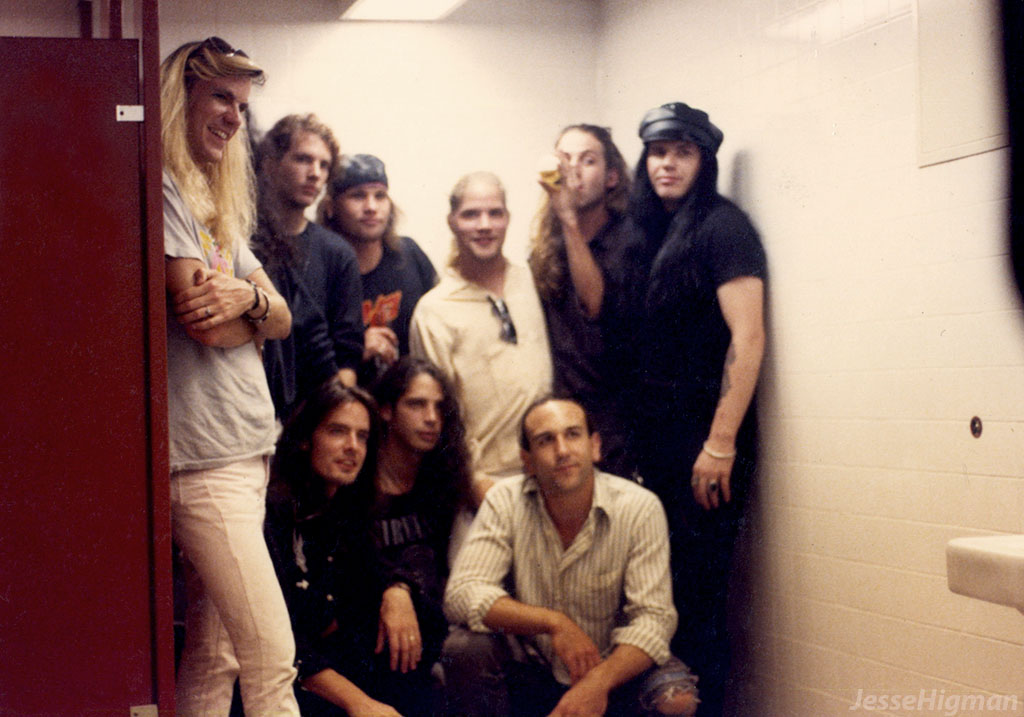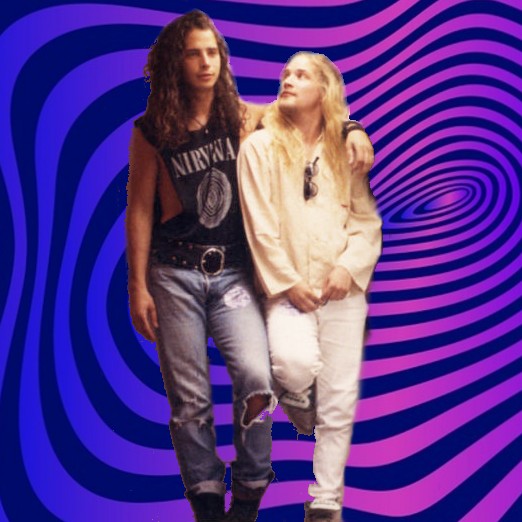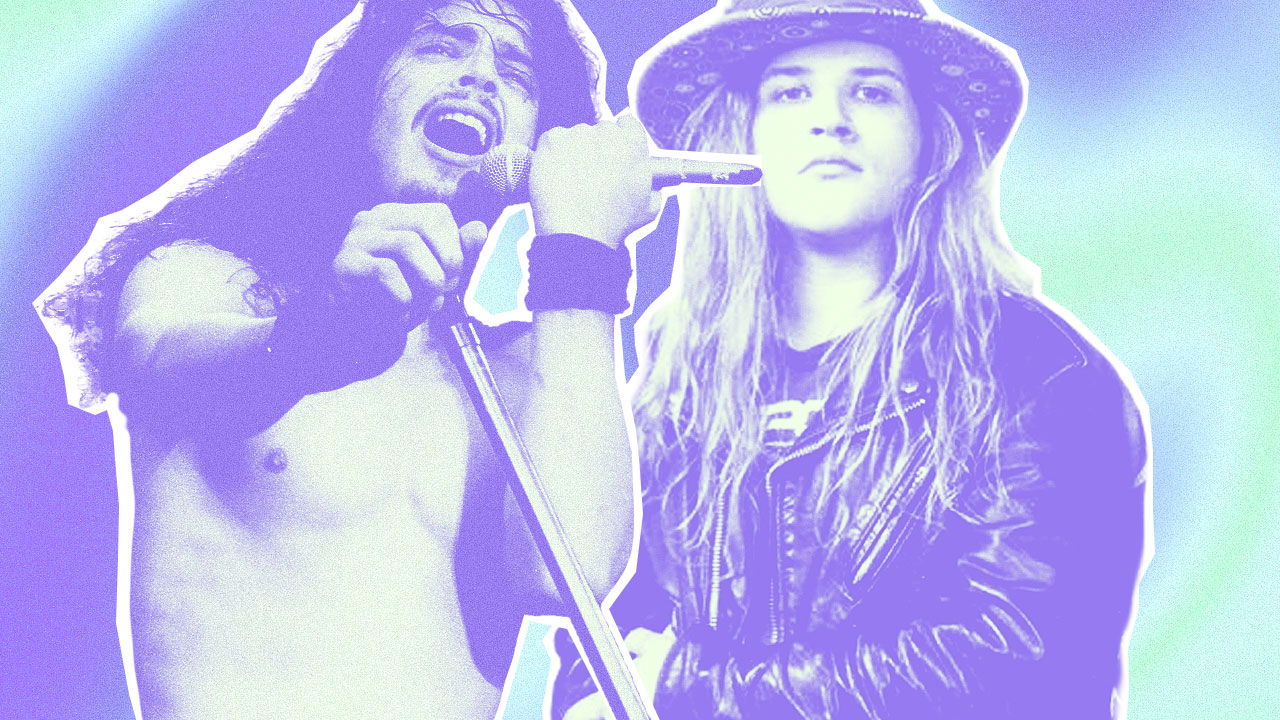On the evening of March 16, 1990, 19 year old Xana La Fuente returned to the Seattle apartment she shared with her boyfriend Andrew Wood. Wood was a rising star within Seattle's flourishing underground scene – an up and coming rock singer who had been making a name for himself with his bands Malfunkshun and, later, Mother Love Bone. But when La Fuente made it inside her apartment that night, she discovered Wood slumped over the couch in a comatose state.
Realising his condition was the result of a heroin overdose, she raced him to nearby Harborview Hospital where he was placed on life support. This is where he would remain over the next few days, as friends and family were contacted and given the opportunity to visit his bedside.
His condition didn't improve. It soon became obvious that a recovery of any kind was beyond improbable.
Physicians advised La Fuente and the extended Wood family, including Andy's mother, father and two brothers, to have him removed from life support. But before that could happen, La Fuente felt it was important people had the chance to say goodbye. Andy had grown particularly close to his friend and former roommate, Chris Cornell, who had been away in Europe on a tour with his band Soundgarden when the tragedy hit. Determined he should have the chance to visit his friend one final time, La Fuente tracked him down and urged him to return to Seattle as soon as possible.
But her decision to reach out to Cornell wasn't a popular one. Kevin Wood, Andy's oldest brother and former bandmate, recalls the awkward way in which Chris was summoned home to see his dying friend. "I don't know what her true motivation for doing that was, why it seemed to be important to make that happen, but it was, and we had to honour that," he tells Louder. "But I know that Christopher felt uneasy about it. I talked to him about it and he said, 'that was one of the most awkward situations I had been in my life, people just waiting for me to come before they pull the plug.' I think the biggest toll it took on him was knowing that everybody was waiting around for him to show up, and that it was his idea."
La Fuente – now in her early 50s and living comfortably in West Seattle; a rapidly-gentrifying beach community on the Puget Sound, popular with young families, artists, and old-school Seattleites still clinging to the city's pre-Amazon past – has a different recollection of events. When I mention her unpopular decision to summon Cornell, she grows tense, reflecting on the decisions she made some 31 years ago. "So I'm watching this true crime show, and it's a case where somebody was brain dead and they waited for the family to come and say goodbye. This isn't unheard of," she says, with a detectable hint of bitterness. "You know, jeez, [they made] such a fucking big deal about that. Maybe I should have not called anybody and then just gone to the hospital alone and then later called everyone and said, like, hey, he died." Her tone shifts to anger, then to sorrow. "You were just trying to do the right thing, and there wasn't any."
Three days after being admitted to the hospital, Wood was removed from life support and pronounced dead. Medical staff recorded hypoxic encephalopathy, a condition that occurs when the brain doesn't receive enough oxygen or blood flow for a period of time, as the official cause of death. He was 24.
His untimely death shocked Seattle's tight-nit music scene, and hit his bandmates in Mother Love Bone – the 70s throwback glam/pre-grunge outfit he'd formed with local musicians Stone Gossard and Jeff Ament – especially hard. "He was just such a unique personality," Ament told Glide Magazine in 2012. "I always say he was the Marc Bolan of our time. He kind of wasn't afraid to push boundaries and do things that were a little bit outside of what everybody else was doing at the time. He was just super funny and really sweet and I miss him for sure."
Andrew Patrick Wood was born January 8, 1966 in Columbus, Mississippi to David C. Wood and Toni Wood, the youngest of three boys, including older brothers Kevin and Brian. The Wood family moved to Bainbridge Island, an exclusive residential community reachable only by boat or plane or a short ferry ride from downtown Seattle, where the boys grew up as self-described "outcasts" in the otherwise wealthy, conservative enclave.
The brothers showed an interest in music early on, and David and Toni supported and nurtured their passions. By the time Andy turned 14, Kevin had started to take notice of his little brother's unique talent. "He was very, very focused," says Kevin. "He wasn't only writing songs all the time, he was also very meticulous about record keeping and writing things down. I did recognise that he was talented and driven enough to want to play with him, and I brought up the idea of starting a band with him." Together, Kevin and Andy recruited Andy's friend from school, a drummer named Regan Hagar, and formed a three-piece they named Malfunkshun. Wood chuckles about their early days. "And of course, Andy jumped all over it and really made it his own."
Malfunkshun graduated from playing house parties on Bainbridge Island to gigging in Seattle during the era of the punk scene. "That would have been the mid-80s when we crossed paths with bands like [Duff McKagan's] Ten Minute Warning," says Kevin. With Andy upfront on bass and vocals, Kevin shredding on guitar and Regan Hagar pounding the skins behind them, the band developed a reputation around Seattle as a compelling live act, complete with a cherubic, white-face painted front man who was able to mesh together the best of the showman-style antics he'd adopted from his idols, Elton John and Freddie Mercury into something new and different.
Around this time, Andy was living mostly with his father, who had split from Andy's mother, commuting back and forth between Bainbridge Island and Seattle. La Fuente, a Los Angeles transplant only 16 or 17 at the time, remembers meeting Andy at the clothing store she worked at on Capitol Hill.
"This lady Gloria hired me to run her store on First and Pike. One day Regan walked in and he's just looking at me all weird. And then he leaves and I see Andrew. He would come into town every single day and just sit there and talk to me for hours. And then one day he doesn't show up and he calls and he's like, 'Well, I missed the ferry today, so I thought I would call.'"

Andy, fresh off of a stint in rehab for drug and alcohol abuse, began looking for a permanent home in Seattle, and connected with Chris Cornell, who was looking for a roommate to help pay the rent on a house he'd found on the west slope of Capitol Hill. Green River guitarist Stone Gossard suggested Andy, who he knew from the local music scene. Andy and La Fuente, now in a committed relationship, moved into the house immediately.
Some have speculated that by inviting Andy to live with him, Cornell sought to provide the fragile singer safe harbour from that which might harm him, but Andy's brother Kevin thinks otherwise. "I really don't see Chris in that role at all," he says. "He probably thought it would be better for (Andy) to live in Seattle, because that's where the action was and he was helping Chris out by moving in. And if you're looking for somebody to pick up a room in your house or somebody who, you know, is doing the same thing you're doing, it makes sense."
La Fuente scoffs at the idea that Chris would have tried to play role model for Andy. "Chris had had a problem with heroin way before all of us lived together," she reveals. "And he was drinking hard alcohol, Jack Daniels with his coffee every morning. So he wasn't sober. Nobody understood addiction back then."
But something else happened when the two moved in together. The pair of burgeoning musicians began taking notice of each other's unique talents – specifically their individual approaches to songwriting. "Andy was in awe of Chris as far as his ability to write these very well structured songs," says Kevin, who describes Andy as an "unconventional musician" who made up for a lack of technical ability with a natural gift – "a way of touching the instrument and making chords and making sounds and adding the vocals that made it all sound like him." That approach appealed to Chris, who, as a writer, seemed to operate from a more cerebral, hyper-critical place. According to Kevin, Chris at one point mentioned that Andy could write ten songs to his one, exacerbated by Cornell's penchant for self-editing. "Chris used to crumble up lyrics and put them in the trash and I would take them out and uncrumple them," says La Fuente.
"We had this huge picture window where you could see the Space Needle and everything, and he would just sit there and kind of look out, moody and depressed. And I used to tell him, jeez, I don't know what you're worried about. You're going to be a huge rock star."
Around this time, Kevin, Andy's Malfunkshun bandmate, started noticing a change in his younger brother. "There was this drive, you know, a feeling that, well, Chris made this step, and I've got to make this step, too. I think that probably sparked Andy to step up his game a bit more as far as getting it together." La Fuente also witnessed a transformation in Andy, recalling the time he told her he was going to stop playing bass in Malfunkshun because he believed himself to be a better singer than bass player. "And I thought, oh, you do, don't you?" La Fuente laughs. "I had heard all his little tapes. I thought they were good, but I didn't really realise the range of his voice. I didn't realise he had the confidence."
Despite the desire to begin taking his music more seriously, Andy soon fell back into his old habits. "He started using again," says Kevin. "I think he had a lot of insecurities about his relationship with his girlfriend. He was always telling me how worried he was and how stressed out he was about it. I think that added so much to his anxiety that it fuelled more drug abuse."
Malfunkshun shared a rehearsal space with Jeff Ament and Stone Gossard's band, Green River, who were in the midst of their own kind of musical turmoil, knocking heads creatively with their lead singer, future Mudhoney front man Mark Arm, who had different ideas of what he wanted their band to be. Eventually, Andy, Jeff and Stone began collaborating on music together. "I think it was a really organic kind of thing where they were friends," says Kevin. "They wanted to hang out, and Andy found the more conventional musical structure he was looking for."
La Fuente says that Cornell's influence definitely played a role in Andy's decision to move in a different musical direction. "He had still not taken off the white makeup, and the only people that wore makeup was Kiss," she says. "And I remember when he finally was like, 'I think I'm going to not put on the makeup.' And I'm like, really, you're going to do this? So, I mean, that was maybe the moment where he had to shed hiding behind a clown identity, be willing to get rid of that and show his true self. And Chris was already doing that. He was like laying it all out to bear."

Andy ditched the white face paint and emerged as the front man of the new musical outfit he dubbed Mother Love Bone, a band that would bridge the over-the-top hair metal aesthetic popularised by LA bands like Guns N' Roses and Poison, to what would become the "grunge" sound that defined Seattle in the early 90s. With Andy adding whimsical lyrics and arena-ready vocals over Stone Gossard's impressively sophisticated compositions, by 1989, the band's reputation as a stellar live act caught the attention of music industry executives in Hollywood, and before long, the band had signed to a major record label and set off on tour, prepping material for their debut album. Later that year, they travelled to Sausalito, California where they would record the tracks that would become Apple, on track for release in March of the following year.
Meanwhile, Soundgarden, Chris' band, was coasting on the success of their third album, Louder Than Love – the first to chart on the Billboard 200, peaking at number 108. They toured North America from December 1989 to March 1990, then left for Europe. Now back in Seattle and living with La Fuente, Andy began working on material for a solo album he'd secured with his record label while Kevin, newly clean and sober, attempted to reform Malfunkshun as a side project with his little brother. "I was seeing things in a new light," he says. "But it didn't really go far because I didn't really realise that Andy had been using again to the level that he had. And you know how it is when you get around people who are clean and sober, and especially if you're using, you just don't want to be around. So it made it awkward, I think, for Andy to be around me too much because I was clean."
After his overdose on the evening of March 16, the lives of those in Andy's orbit would be forever changed. Mother Love Bone parted ways, and Andy's untimely death hit Cornell especially hard, who took to writing deeply personal songs as a sort of catharsis to help process the loss of not just a dear friend, but an artist he'd drawn tremendous inspiration from.
His death also affected the Seattle music community in profound ways. "The Seattle scene at that point was not the Seattle scene," says Kevin. "Maybe it was the end of the innocence, because right around then everybody and their uncle wanted to move to Seattle, be in Seattle, be part of the Seattle scene. It became a sea of crocodiles." I ask him if Andy's death was at all symbolic. "I think that that was just a very, very sad moment for everybody in the community that we called our scene, and it just happened to arrive at the time when it did change. Basically, it was sort of the harbinger of the end of the scene."
Chris Cornell eventually shared his songs about Andy with Stone and Jeff, who agreed to help record them as a sort of tribute to their late friend. They named the project Temple Of The Dog, taken from the lyrics of one of Andy's more poignant songs with Mother Love Bone, Man Of Golden Words. A&M liked what they heard, and released the songs as a self-titled album on April 16, 1991.
While Temple Of The Dog initially failed to chart, it was re-released in the summer of 1992, billed as a collaboration between Soundgarden – on the heels of the blockbuster 1991 release, Badmotorfinger – and Pearl Jam, the band Gossard and Ament had formed in the wake of Wood's death. Temple Of The Dog became one of the top 100 selling albums in 1992, and produced a Billboard 200 single, Hunger Strike, a duet between Cornell and a fresh-faced surfer from San Diego, Eddie Vedder, whom Gossard and Ament had recruited to replace Andy Wood as front man of their musical exploits.
About a year after Andy died, La Fuente says she started using heroin with Alice in Chains lead singer Layne Staley, and his girlfriend, Demri, who she hooked up with in Los Angeles. Both of whom eventually died, like Andy, of heroin overdoses. La Fuente eventually got clean, and has been sober for 15 years. She says that Andy's father, Dave, never quite got over the loss of his youngest son, and eventually "drank himself to death on a boat" – the same boat Andy's brother Brian now lives on.
On May 18, 2017, Chris Cornell, after a long battle with depression and chemical dependency, took his own life. He was 52.
Kevin continues to write, record and perform music under the Malfunkshun name. He also distributes cassette tapes of Andy's solo material in an effort to keep the memory of his brother alive. I ask him if he thinks that Andy died a martyr. "No, I don't think so," he says. "Martyrdom would mean that he died for a purpose. He didn't. He missed out on being able to show everybody his genius in a way that would have grown." He pauses to collect himself.
"I mean, he'd be in his 50s now and it was just getting better with time. I think it was a tragedy."
